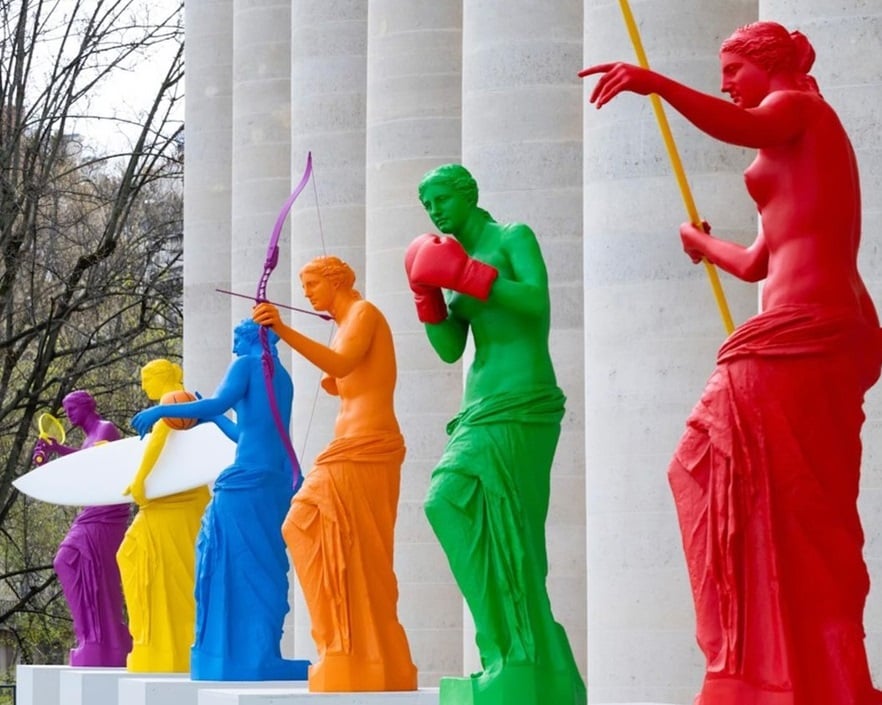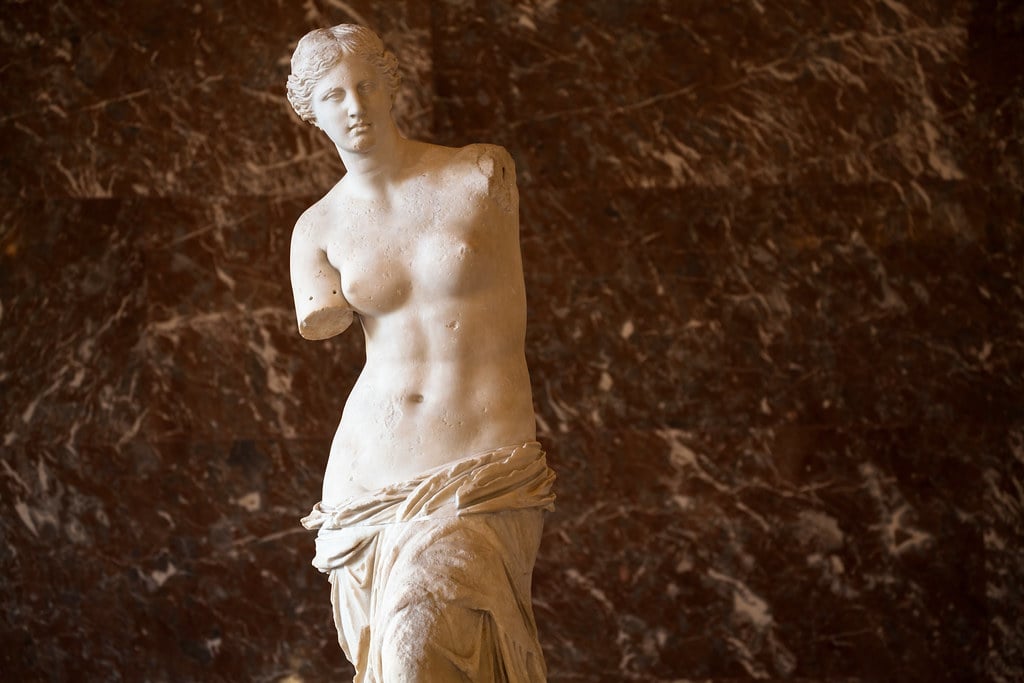
Six sculptures, copies of one of the most famous Greek statues, the Venus de Milo, have been installed at the steps of the French National Assembly, the Palais Bourbon in Paris celebrating the Olympic spirit as the French capital continues its countdown for the Summer Olympic Games.
Created by artist Laurent Perbos the sculptures are installed for the Cultural Olympiad which will run in parallel with the Games. They will be on view from April 2 to September 22, 2024, for the duration of the competition, in the open air.
French visual artist Laurent Perbos conceived the artistic installation, with each sculpture embodying an Olympic discipline: basketball, boxing, javelin, para-archery, surfing and tennis.
6 Vénus en forme olympique à l’Assemblée !
Réinterprétation de la Vénus de Milo, pratiquant le javelot ou encore le para-tir à l’arc, l’œuvre de @laurent_perbos s’inscrit dans le cadre de l’#OlympiadeCulturelle.
Elle est visible dès aujourd’hui et pendant tous les #JOP2024. pic.twitter.com/pQnxAoPWbt— Assemblée nationale (@AssembleeNat) April 2, 2024
Inspired by the Venus de Milo, these female figures in acrylic resin each hold an object representing their sport, an allegory that runs counter to the collective imagination, which associates sport with men and reflects the evolution of the Games.
On display until the European Heritage Days, these colorful works are intended to be inclusive, each associated with a color of the rainbow, symbolizing equal rights and the fight against discrimination.
What’s more, the Olympic flame will cross paths with these sporting Venuses on July 14.
The Venus de Milo sculpture

The Venus de Milo, or the Aphrodite of Milos, which was discovered on April 8, 1820, and displayed at the Louvre Museum in Paris ever since, changed Western culture in the 19th century, creating a certain ambivalence about the idea of female beauty.
Aphrodite—the goddess of love for ancient Greeks—had been depicted by artists of that time as a woman of exceptional beauty.
The Venus de Milo statue, which is one of the most beautiful interpretations of the goddess, is believed to be the work of ancient sculptor Alexandros of Antioch.
The existing enigma of what Aphrodite’s hands were doing has also been a subject of extensive study and countless interpretations since its discovery.
Experts believe that the original statue depicted the Greek myth of The Judgment of Paris and Aphrodite is holding an apple in one hand.
According to the myth, Eris, the goddess of discord, is angry for not being invited to a feast and crashes the party with a golden apple from the Garden of the Hesperides upon which was inscribed “For the fairest one.”
The Goddesses Hera, Athena, and Aphrodite all staked claims to the apple. Zeus refused to act as judge, declaring instead that the mortal Paris of Troy would do the job.
All three goddesses tried to bribe the mortal judge, but Aphrodite’s bribe—Helen, the most beautiful woman on Earth—won. The statue is thought to depict Aphrodite admiring her prize.
Hence, in essence, the statue of Aphrodite of Milos shows the results of a beauty contest— the first in Western Civilization.
Several art historians, academics, and artists have claimed that the beauty of the Venus de Milo lies in her missing arms, i.e., in her very imperfections.
Salvador Dali created the Venus de Milo with Drawers, a half-size plaster reproduction of the famous marble statue altered with pompom-decorated drawers on the figure’s forehead, breasts, stomach, abdomen, and left knee.
Related: How the Venus de Milo Shaped the Western Idea of Female Beauty